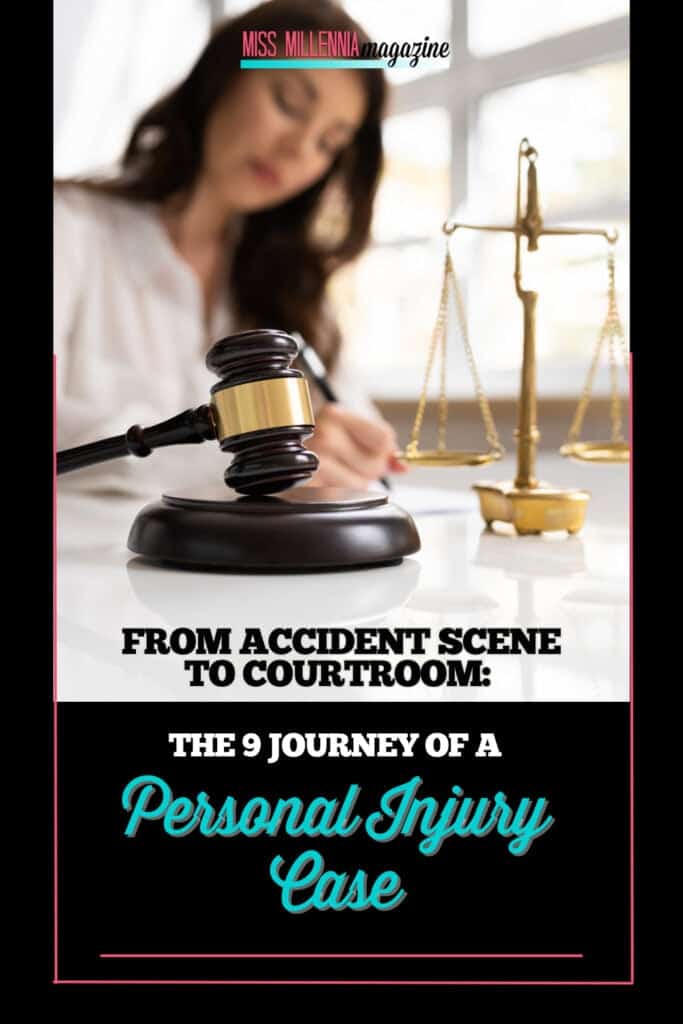From Accident Scene to Courtroom: The 9 Journey of a Personal Injury Case

Myrtle Beach, South Carolina, is a beloved destination known for its stunning coastline, vibrant entertainment scene, and welcoming community. This coastal city, famous for its 60-mile stretch of sandy beaches, attracts millions yearly visitors who enjoy the sun, surf, and many outdoor activities. Beyond its tourist attractions, Myrtle Beach is a thriving community with a bustling economy and a strong emphasis on hospitality. However, accidents can occur amidst the fun and relaxation, whether on the road, at a workplace, or in recreational areas, leading to injuries and complicated legal procedures.
Personal injury cases can be complex and challenging, involving various stages from the accident scene to the courtroom. Understanding the journey of a personal injury case can help potential claimants confidently navigate this process. You can visit this link to seek legal advice for personal injuries in Myrtle Beach. Meanwhile, this article will overview the key stages and show what individuals can expect at each step.
Stage 1: The Accident Scene
The first stage of a personal injury case is the accident itself. Whether it’s a car crash, slip and fall, or workplace incident, it is crucial to document as much information as possible. This includes gathering eyewitness statements, taking pictures or videos of the accident scene, exchanging contact information with other parties, and seeking medical attention for injuries sustained.
Stage 2: Seek Medical Attention
Following an accident, it is imperative to seek immediate medical attention, even if injuries appear minor at first. This will ensure that injuries are correctly diagnosed and treated promptly, and a record will be created documenting the extent of the harm caused.
Stage 3: Engaging Legal Representation

Hiring a competent personal injury attorney is vital for individuals seeking compensation for their injuries. An experienced attorney navigates complex legal obstacles and advocates for their client’s best interests. They will guide clients through each subsequent stage of the personal injury case.
Stage 4: Investigation and Evaluation
Once legal representation has been secured, an extensive investigation into the incident will be conducted. This involves acquiring police reports (if applicable), gathering additional witness statements, reviewing medical documents and records related to injuries sustained during the accident, analyzing available evidence (such as surveillance footage), and assessing liability. During this evaluation stage, attorneys will consider factors such as negligence or fault on behalf of other parties involved in causing the accident. Gathering all relevant evidence strengthens the case when negotiating with insurance companies or presenting before a court.
Stage 5: Negotiation and Settlement
In many personal injury cases, insurance companies representing the responsible party may attempt to settle the case before going to trial. Negotiating a fair settlement is an essential step in this process. Attorneys will consider various factors such as medical expenses, lost wages, pain and suffering, and future medical expenses when advocating for their clients. Claimants mustn’t settle too quickly or accept inadequate compensation amounts. An experienced attorney understands the value of a case and will negotiate diligently with insurance adjusters to secure the maximum possible settlement.
Stage 6: Filing a Lawsuit

Filing a lawsuit is necessary if negotiations fail to result in a fair settlement. This signifies entering the litigation phase of the personal injury case. A formal complaint is filed in court outlining allegations against the responsible parties and detailing any damages suffered by the claimant. Once a lawsuit has been initiated, both sides will engage in discovery – obtaining additional evidence, testimony from experts or witnesses, and answering requests for information exchanged between opposing attorneys.
Stage 7: Pre-Trial Procedures
Both parties must complete pre-trial procedures before the trial begins. These procedures can include settlement conferences, mediation sessions, or alternative dispute resolution methods sought by the court to resolve the matter outside the courtroom.
Stage 8: Trial
If efforts at settling outside court are unsuccessful, cases move forward to trial. Here, both sides will present evidence, during which witnesses may be called upon and cross-examined accordingly. The judge or jury assigned to decide on verdicts bases their decisions on this body of evidence – weighing its validity and credibility.
Stage 9: Verdict and Appeal
Judgment day comes after examining all presented evidence during trial proceedings and delivering a verdict. If claimants gain victory by obtaining suitable compensation to justify their losses, their rights are upheld thanks to their legal representation efforts. However, at this stage, disappointed parties have further recourses, namely appealing the verdict of the proceedings. Appellate courts will then scrutinize the judgment for potential legal errors by performing an intensive review, allowing possible grievance or dissatisfaction, and amplifying recourse for claimants.
Conclusion
The journey from an accident scene to the courtroom encompasses numerous stages in a personal injury case. The process requires patience, determination, and skilled legal representation. By understanding these stages and seeking expert advice, individuals can effectively navigate through complex legal procedures while working towards obtaining rightful compensation for their injuries and losses.





